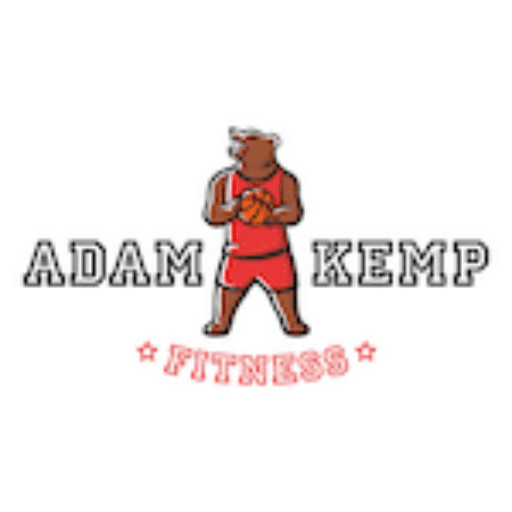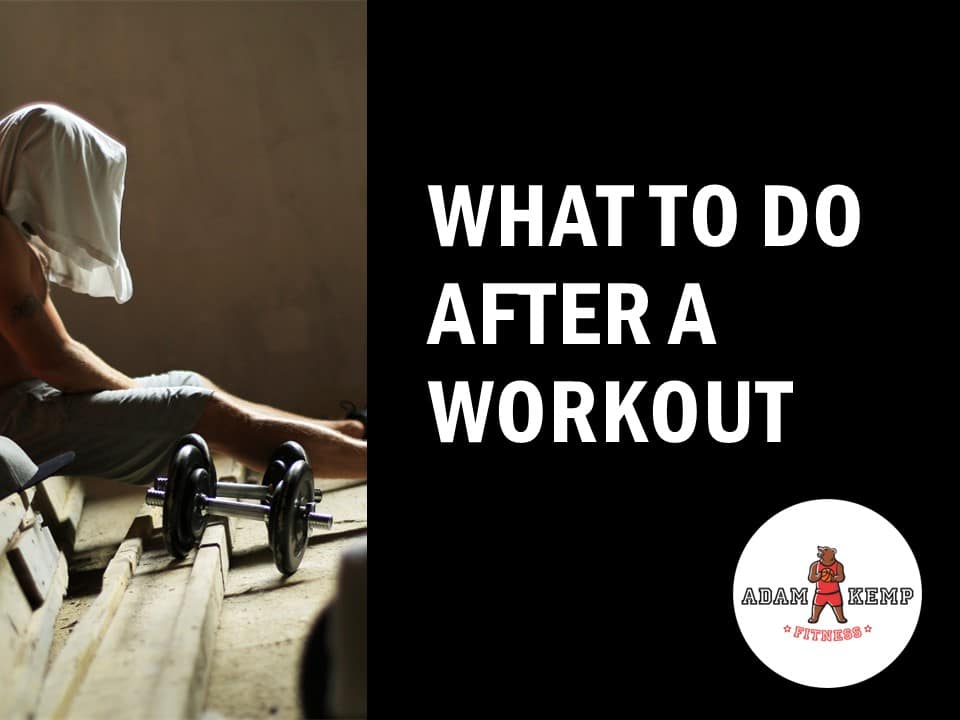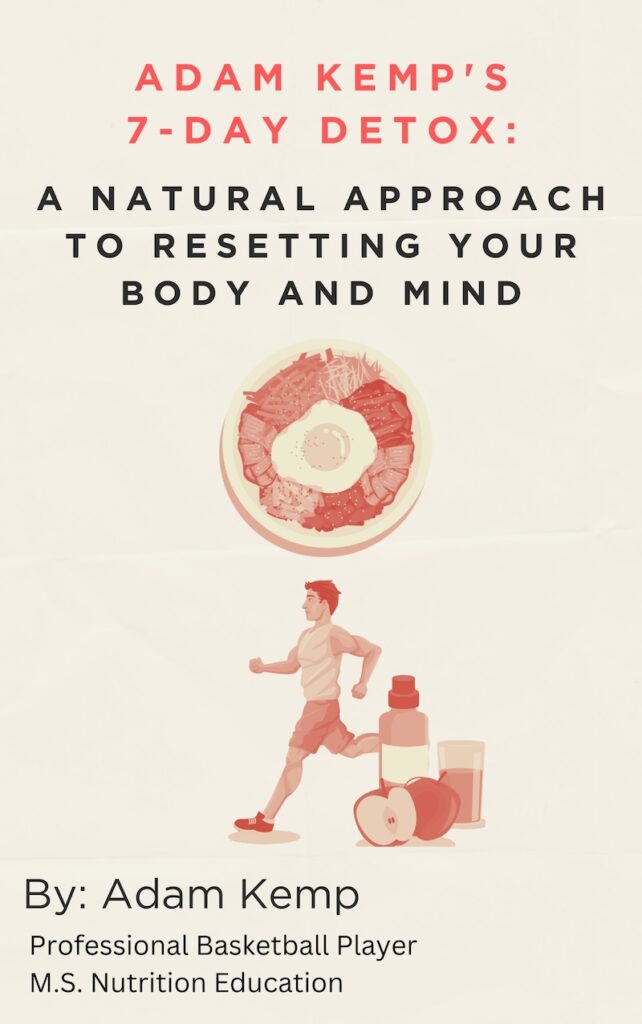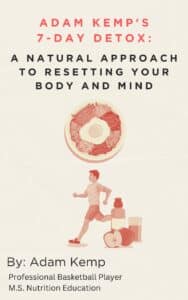What to Do After a Workout to Get Better Results?
Most people put all their energy into training hard, but knowing what to do after a workout often determines how well your body adapts, recovers, and grows.
The minutes and hours following exercise are a critical window where your muscles repair, energy stores replenish, and your nervous system resets.
Failing to prioritize recovery can leave you dealing with unnecessary soreness, prolonged fatigue, and even higher risk of injury.
On the other hand, implementing effective post-workout strategies, like cooling down, stretching, rehydrating, and fueling properly, helps you maximize progress, recover faster, and get more out of each training session.
Whether your goal is muscle growth, fat loss, endurance, or overall wellness, knowing what to do after a workout and doing the right things is just as important as knowing how to train.
The Most Important Things to Do After a Workout to Improve Your Results
From cool-down exercises to proper nutrition and rest, we’ll cover everything you need to know to help your body recover after a workout.
1.) Cool-down
After an intense workout, it’s important to cool down gradually to help your body recover and prevent injury.
The cool-down period helps to bring your heart rate and breathing back to normal levels, which can help reduce dizziness, lightheadedness, and muscle cramps.
Additionally, cooling down can help prevent blood from pooling in your muscles, which can lead to soreness and stiffness.
Light-Cardio
Light aerobic cardio, such as walking on a treadmill or riding a stationary bike, is effective in helping your body cool down after a workout.
These exercises help increase blood flow to your muscles, which can help reduce soreness and stiffness.
When performing light aerobic cardio as part of your cool-down, it’s important to keep the intensity low and not push yourself too hard.
Aim to maintain a steady pace and avoid sudden or jarring motions that could strain your muscles.
Incorporating light aerobic cardio into your cool-down routine can help your body recover faster after exercise and reduce the risk of injury or soreness, and it should be the first thing you do after a workout.
Stretching
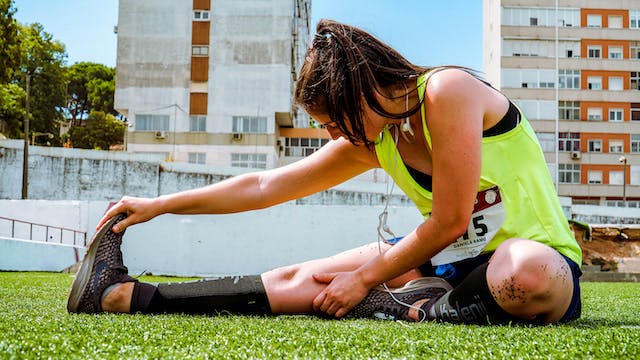
Stretching exercises can help reduce muscle tension and increase flexibility, which can help prevent injury and improve overall performance.
While doing cool-down exercises, it’s important to maintain proper form to avoid any injury.
Focus on slowly and gently stretching each muscle group and hold each stretch for 10-30 seconds.
Avoid bouncing or jerky movements, which can lead to muscle strains or tears.
Additionally, listen to your body and don’t push yourself beyond your limits.
If you feel pain or discomfort during any stretch or exercise, stop immediately and rest.
Self-Massage
Lastly, using a self-massage tool after a workout is a great way to complete your cool down and keep your muscles and joints healthy.
Self-massage tools can effectively reduce muscle soreness and stiffness by promoting blood flow to the muscles and breaking up knots and adhesions.
There are many different self-massage tools, but two of the most common are foam rollers and percussive massage guns.
A quality foam roller is a simple and affordable way to speed up muscle recovery after a workout and help reduce the symptoms of Delayed Onset Muscle Soreness (DOMS).
There are many guides about how to foam roll properly if you want to learn more about foam rolling.
I use a TheraGun G5 Pro because I believe it is the best percussive massage gun, although it is a bit pricey.
By applying these self-massage techniques after a workout, you can help reduce muscle soreness and improve flexibility, allowing you to recover faster and get back to your workouts sooner.
It’s important to use these tools correctly and avoid applying too much pressure or overusing them, as this can lead to injury or aggravate sore muscles.
2.) Rehydrate!
Staying hydrated after a workout is essential for aiding recovery and overall physical performance.
During a workout, your body loses fluids through sweating and failing to replenish these fluids can lead to dehydration, which can cause fatigue, cramps, and dizziness.
Drinking enough water after a workout can help replace the fluids lost and help your body recover faster.
The recommended amount of water to drink after a workout is about 16-20 ounces for every pound of body weight lost during exercise.
Sports drinks and electrolyte replacement drinks are also an option for rehydrating after a workout.
These drinks contain electrolytes like sodium and potassium, which help to restore the electrolyte balance lost during exercise.
However, it’s important to be mindful of the sugar content in sports drinks, as they can be high in calories and lead to weight gain if consumed in excess.
For most people, water is the best option for staying hydrated after a workout, but an electrolyte replacement drink may be beneficial if you’re exercising for a prolonged period or in hot weather.
For more information, you can check out my article on hydration 101.
3.) Post-Workout Recovery Drink
Consuming a post-workout recovery drink is an essential step in your post-workout routine.
After a workout, your body enters the “anabolic window,” where your muscles are more receptive to nutrients that promote recovery and growth.
This anabolic window typically lasts between 30 minutes to an hour after your workout, but some research suggests it continues up to two hours after a workout.
Drinking a high-protein recovery drink during this period can help maximize your workout’s benefits since protein is a crucial nutrient for muscle protein synthesis, the process by which your muscles repair and grow.
Consuming protein after a workout helps to promote muscle recovery and growth, while carbohydrates, on the other hand, are essential for increasing muscle glycogen storage, the energy source your muscles use during exercise.
A combination of protein and carbohydrates in your post-workout recovery drink can help to optimize your recovery.
Protein powder supplements are a popular option for a post-workout recovery drink.
They are convenient, quick to prepare, and can provide a high dose of protein.
Many consider whey protein as the best post-workout supplement and the best addition to their post-workout smoothies.
However, when comparing plant vs whey protein, I prefer plant protein powder instead of whey.
Regardless, it’s important to choose a high-quality protein powder that is free from additives and fillers.
My favorite protein powder supplement is Garden of Life Organic Protein and Greens.
Last update on 2025-10-30 / This article includes affiliate links/Images via Amazon Product Advertising API. I may earn commissions on purchases made through these links.
Alternatively, you can bring a healthy post-workout smoothie to the gym to quickly replenish your body.
A smoothie made with protein powder, fruits, and vegetables can provide a balanced combination of protein, carbohydrates, and other essential nutrients for recovery.
I like to make a post-workout smoothie after my workouts because it’s very easy to make a nutritious and delicious one.
Here are a few post-workout smoothie recipes that I use, which I believe you may enjoy trying:
Recipe 1: Blueberry-Banana Smoothie
- One scoop Garden of Life Raw Organic Protein & Greens Vanilla Flavor
- 1 serving Force Factor Modern Mushroom
- 1 cup baby spinach
- One frozen banana
- 1/2 cup blueberries
- 1 cup coconut water
This blueberry-banana smoothie is a nutrient-dense and delicious post-workout option that can support muscle recovery, glycogen replenishment, and overall health.
Overall, this blueberry-banana smoothie provides a balanced blend of carbohydrates, protein, and antioxidants to support muscle recovery and overall health.
The adaptogenic mushrooms in the Force Factor Modern Mushrooms may also provide additional benefits for reducing stress and supporting immune function.
Last update on 2025-10-31 / This article includes affiliate links/Images via Amazon Product Advertising API. I may earn commissions on purchases made through these links.
Recipe 2: Strawberry Pineapple Smoothie
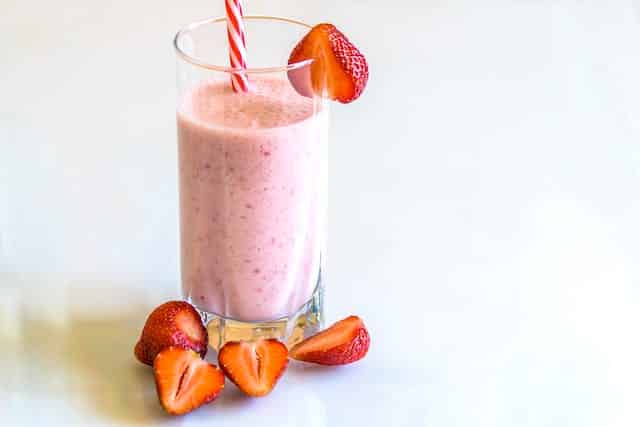
- One scoop Garden of Life Raw Organic Protein & Greens Vanilla Flavor
- 1 cup kale
- 1 cup frozen pineapple
- 1 cup frozen strawberries
- 1 cup almond milk
The Strawberry-Pineapple Smoothie is a refreshing and nutrient-packed option that can support post-workout recovery and overall health.
Overall, this Strawberry-Pineapple Smoothie is a delicious and nutrient-dense post-workout option that provides a balanced blend of carbohydrates, protein, and antioxidants to support muscle recovery and overall health.
Recipe 3: Green Smoothie
- One scoop Garden of Life Raw Organic Protein & Greens Vanilla Flavor
- 1 Serving Bloom Greens & Superfoods
- 2 cups baby spinach
- One frozen banana
- 1 cup coconut water
This smoothie is packed with nutrients, including antioxidants, vitamins, and minerals, which can support overall health and aid in recovery from exercise.
The protein from the Garden of Life protein powder supports muscle protein synthesis, while the carbohydrates from the banana and coconut water aid in muscle glycogen storage.
In addition to the benefits mentioned above, the Green Smoothie recipe has several unique advantages that make it an excellent post-workout option.
Overall, the Green Smoothie recipe is a nutrient-packed option that can provide a balanced blend of carbohydrates, protein, and antioxidants to support muscle recovery and overall health.
The addition of baby spinach, Bloom Greens & Superfoods, and coconut water provides unique benefits that make this recipe an excellent post-workout choice.
Last update on 2025-10-30 / This article includes affiliate links/Images via Amazon Product Advertising API. I may earn commissions on purchases made through these links.
4.) Take a Shower and Change Your Clothes
After completing a proper cool-down routine and intaking appropriate nutrients for your body, the next step after a workout is to take a shower and change into clean clothes.
Although gym clothes are typically designed to absorb moisture, they are not breathable in the long run and can trap sweat, oil, and dead skin cells.
If not removed promptly, these elements can rub into your skin and cause breakouts or infections.
It’s best to change out of your tight gym clothes as soon as possible, preferably in a locker room if available.
Showering after a workout is also important as it helps to remove metabolic waste from your hair and skin and prevent body odor.
To maximize the benefits of your post-workout routine, consider using skin care products such as Skinfood for your face and body.
5.) Monitor and Track Your Progress for Better Results
Keeping track of your progress after every workout is crucial to ensure that you are making consistent improvements toward your fitness goals.
Maintaining a workout log book is an excellent method to document your workout sessions, including the exercises performed, calories burned, and time spent.
This approach can help you stay motivated and maintain a record of your progress.
By reviewing your workout log regularly, you can evaluate your progress and recognize the benefits of your efforts.
This acknowledgment can provide additional motivation to continue striving toward your fitness objectives.
6.) Optimize Your Sleep Quality
After a strenuous workout, it’s essential to allow your body to recover adequately, and getting a good night’s sleep is crucial for this process.
Getting a good night’s sleep is essential not just for post-workout recovery but for overall health and well-being.
Sleep is vital in cognitive functioning, mood regulation, and immune system support.
Inadequate sleep has been linked to various health issues, including obesity, diabetes, heart disease, and premature death.
When it comes to post-workout recovery, sleep is especially critical.
During sleep, your body releases human growth hormone, which is essential for repairing and rebuilding muscle tissue.
Without enough sleep, your body may not have the time it needs to heal, leading to slower progress and increased risk of injury.
It’s recommended to aim for 7-8 hours of uninterrupted sleep every night to ensure your body has sufficient time to repair and rejuvenate itself.
In addition to ensuring adequate sleep quantity, focusing on sleep quality is also essential.
Poor sleep quality, such as fragmented or shallow sleep, can also hinder post-workout recovery.
Factors such as stress, poor sleep hygiene, and sleep disorders like sleep apnea can all contribute to poor sleep quality.
You can do several things to improve sleep quality, such as establishing a consistent sleep schedule, creating a relaxing sleep environment, and avoiding stimulating activities before bedtime.
Additionally, incorporating relaxation techniques such as meditation or deep breathing can help calm the mind and promote deeper, more restful sleep.
If you’re struggling with getting quality sleep, consider natural supplements like zinc, which can promote deeper and longer sleep.
Taking zinc for sleep is a great way to improve your sleep quality and get more out of your workouts because zinc contributes to so many bodily functions and it is a nutrient that is often lacking in our diets.
Therefore, taking zinc at night is a great way to get more out of your workouts.
By prioritizing healthy sleep habits, you can optimize your fitness progress and enjoy the many benefits of restful, restorative sleep.
What to Do After a Workout to Lose Weight
If your main goal is weight loss, what you do after a workout can be just as important as the workout itself.
The post-exercise period is when your body burns calories at an elevated rate, manages hunger signals, and begins recovery, which are all factors that influence fat loss.
By aligning your recovery strategies with your weight loss goals, you can make your workouts more effective.
Focus on Hydration Before Snacking
Exercise often triggers thirst before true hunger.
Drinking water first can help control unnecessary calorie intake and support fat metabolism.
In fact, studies show that hydration before meals may reduce overall calorie consumption (Dennis et al., 2010).
Choose High-Protein, Balanced Meals
Eating a protein-rich snack or meal within two hours of exercise helps preserve lean muscle while encouraging fat loss.
Pairing protein with fiber-rich vegetables or whole grains increases satiety and helps you feel fuller longer, which makes it easier to maintain a calorie deficit.
Avoid High-Sugar “Recovery” Foods
While sports drinks, energy bars, or sugary snacks are often marketed for recovery, they may undermine fat loss goals if your workout didn’t deplete glycogen significantly.
Unless you’ve completed very intense or long training, water and whole foods are better post-workout options.
Keep Moving Throughout the Day
A workout burns calories, but non-exercise activity (walking, standing, daily movement) often contributes even more to daily energy expenditure.
Light activity after your workout, such as walking instead of sitting right away, helps keep your metabolism active and supports weight loss.
Prioritize Sleep for Fat Loss
Lack of sleep increases cravings for calorie-dense foods and can slow your progress.
Aim for 7–9 hours of quality sleep per night to help regulate hunger hormones like ghrelin and leptin, both of which impact fat loss outcomes.
What to Do After a Workout to Build Muscle
By focusing on what to do after a workout to build muscle, you’ll create the optimal environment for muscle repair, strength gains, and long-term hypertrophy.
The post-exercise period is when your muscles repair, adapt, and grow stronger through a process called muscle protein synthesis.
Supporting this process with the right recovery strategies ensures better hypertrophy results over time.
Prioritize Protein Intake
Consuming high-quality protein within two hours of finishing your workout maximizes muscle repair.
Research suggests 20–40 grams of protein post-workout stimulates muscle protein synthesis most effectively (Schoenfeld & Aragon, 2018).
Whey protein, casein, or plant-based proteins like pea or rice protein are excellent options.
Combine Protein with Carbohydrates
Carbohydrates replenish glycogen, your body’s main energy source during resistance training.
Pairing carbs with protein not only restores energy but also enhances amino acid delivery to muscles.
A balanced post-workout meal like chicken with sweet potatoes, or a smoothie with fruit and protein powder, works well.
Use Recovery Tools to Reduce Soreness
Foam rolling, stretching, and massage guns help improve circulation, reduce stiffness, and prepare your muscles for the next workout.
Minimizing soreness allows for more frequent and effective training sessions—essential for long-term muscle growth.
Rehydrate for Performance
Muscle tissue is about 75% water, so dehydration can hinder recovery and reduce strength.
Replenishing fluids after lifting helps maintain muscle function and supports anabolic processes.
Consider electrolytes if your workout was long or very intense.
Sleep and Rest are Non-Negotiable
Most muscle repair and growth happen during deep sleep, when growth hormone levels are elevated.
Aim for 7–9 hours of quality rest each night to give your muscles the best chance to recover and grow stronger.
Final Thoughts: Optimizing What You Do After a Workout for Better Results
What you do after a workout plays a defining role in how well your body recovers, adapts, and progresses.
A thoughtful post-workout recovery routine helps reduce soreness, restore energy, and strengthen long-term performance, making it just as important as the training itself.
Every element, from cooling down to hydrating, fueling with the right nutrients, and prioritizing sleep, works together to support muscle repair and overall recovery.
By consistently applying these strategies, you’ll not only accelerate results but also protect your body from injury and burnout.
Recovery is highly individual, so pay attention to how your body responds and adjust as needed.
Stay consistent, remain patient, and when necessary, seek guidance from qualified professionals to refine your approach.
Ultimately, optimizing what you do after a workout is the key to unlocking greater strength, improved endurance, and better overall health.
Commit to recovery with the same energy you bring to training, and you’ll maximize your potential both in and out of the gym.
This website does not provide medical advice. This website site does contain affiliate links, and purchases may earn a commission.
Read my Medical Disclaimer, Review Disclaimer, and Publishing Policies for more details. Use of this site indicates acceptance of these terms.
